These measurements are performed in the underground facilities and are influenced by the local geographic and material mass distribution in the surroundings of the measurement locality. The local effects are induced by the tidal forces in such a way that they modulate the deformation field in the vicinity of the measurement site (and the measured data, as well). The modulation depends on the underground cavity shape (the so-called cavity effect), on the density and elastic parameters distribution in the surroundings (geological effect), on the surface topography (topografic effect), if the cavity is situated sufficiently close to the surface. As the force generating the mentioned local effects is identical with the force generating the tidal deformations, it is not possible to separate them by spectral analysis techniques. The quantitative estimation of these effects can be performed through modelling the deformation field in the vicinity of the cavity, taking into account realistic properties of the surroundings.
The real 3D model area is approximated by two-dimensional sections. Such approach can be feasible in terms of unchangeable structural and material properties in the direction perpendicular to the cross-section - the so-called plain strain case - the component of the deformation tensor in that direction is zero. It is applicable in cases of long galleries without strong lateral inhomogeneities in the direction along its axis. The calculation procedure consists from the computation of the deformation field in the vicinity of the instrumental cavity for the model loaded by the force representing the tidal influence (for examined time step) and simultaneously for the identical model without cavity. The additional tilt evoked by the cavity presence can be determined from the tilt difference for two mentioned variants of the model.
The problem is assumed linear due to the small size of the tidal deformation, deeply under the limit of the elasticity of the rock material. This assumption allows the calculation be more efficient. Presented procedure was used in the model calculation of the cavity effect influence for the tidal station of the Geophysical institute SAS located in the gallery of the St. Anthony of Padua in Vyhne for the specified time interval.
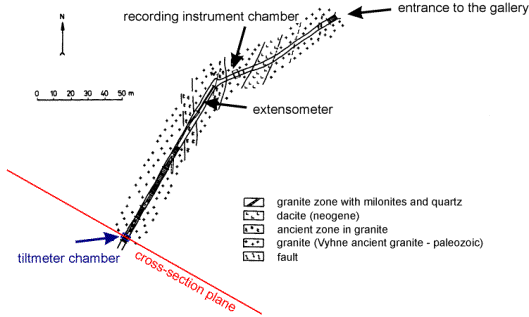 Sketch map of the tidal station in Vyhne (top view), arrangement of the instruments and geological situation in the St. Anthony Padua gallery, the cross-section plane used in calculation is outlined.
Sketch map of the tidal station in Vyhne (top view), arrangement of the instruments and geological situation in the St. Anthony Padua gallery, the cross-section plane used in calculation is outlined.
The finite element mesh of the model.
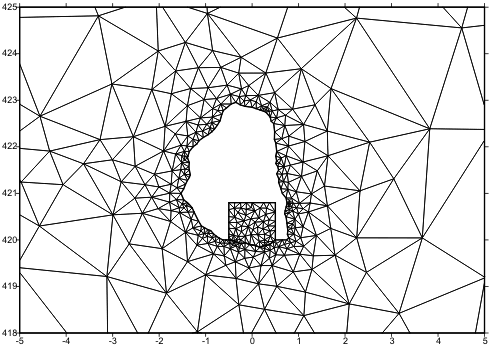
The detail of the finite element mesh in the vicinity of the tiltmeter chamber.
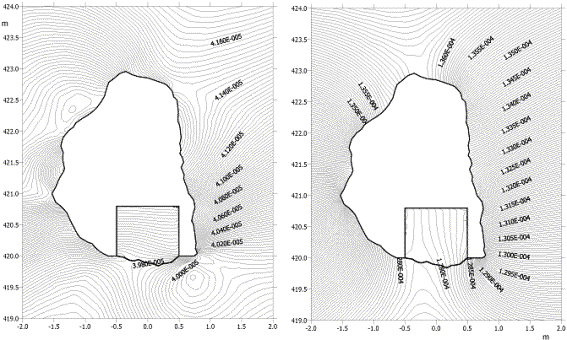
Components of the displacement vector - x (left) and y (right) - computed for the loading force
acting in the direction of angle 60° to the horizontal.
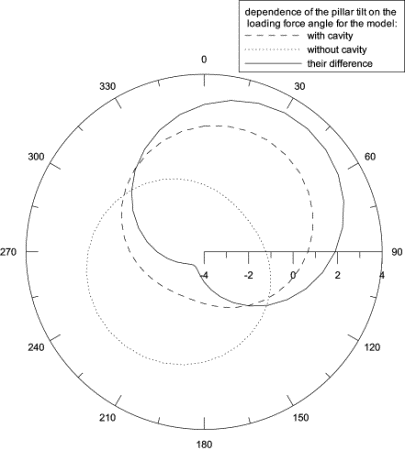
The representation of the tilt values in the middle of the instrumental pillar
for the both variants of the model in dependence on the all considered directions
of the loading force and their difference, the tilt values are in radians × 10-6.
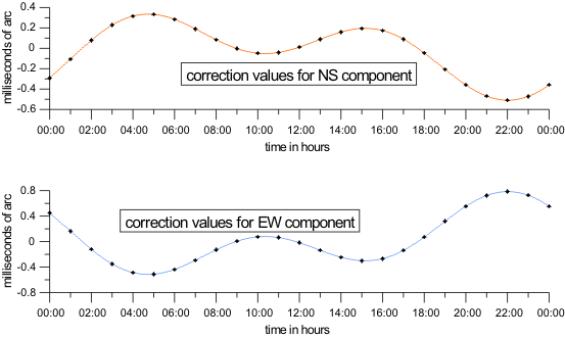
The representation of the computed tilt corrections for the specified time interval.
